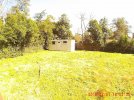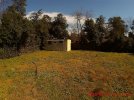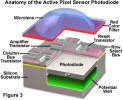TeriTerryTarry
Well-Known Member
- Joined
- Dec 4, 2015
- Messages
- 661
- Reaction score
- 254
- Country
- United States
- Dash Cam
- Several action cams
From the Wikipedia article, "In photography, exposure value (EV) is a number that represents a combination of a camera's shutter speed and f-number". Okay, but action cams don't have shutters or adjustable apertures. For the SJCam I guess you could say the aperture is the size of the fixed opening that light passes through. Also from Wikipedia, "the f-number (sometimes called focal ratio, f-ratio, f-stop, or relative aperture) of an optical system is the ratio of the lens's focal length to the diameter of the entrance pupil." The lens on an action cam is fixed so I guess that a fixed aperture and a fixed lens result in a fixed f-number. If that's the case, the only variable left in EV is shutter speed. So on my SJ4000, EV is actually shutter speed, or more accurately the amount of time that the image processor reads the data from the sensor, is that correct?
Last edited:







